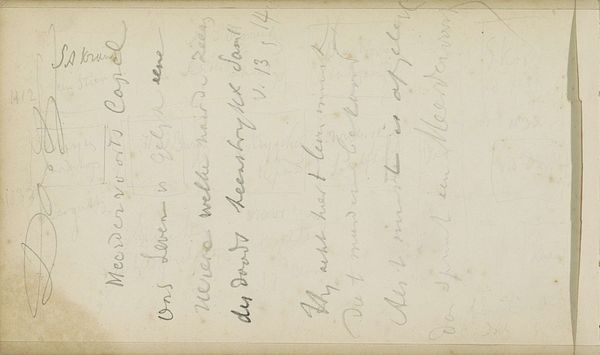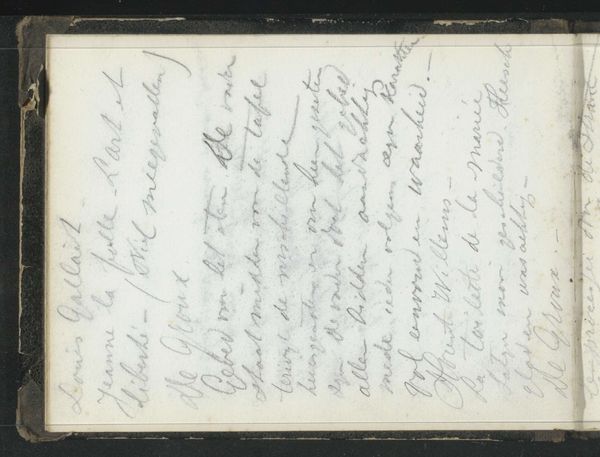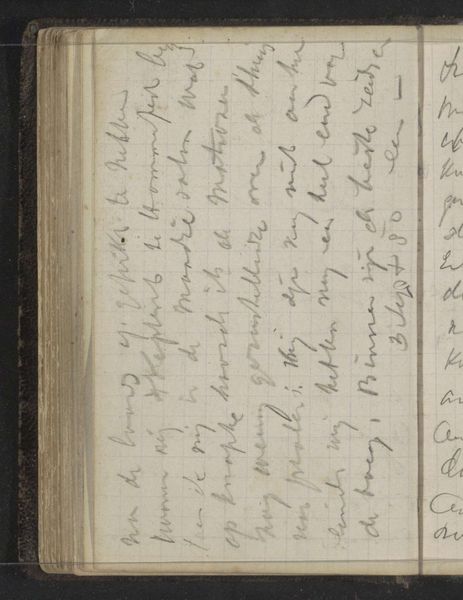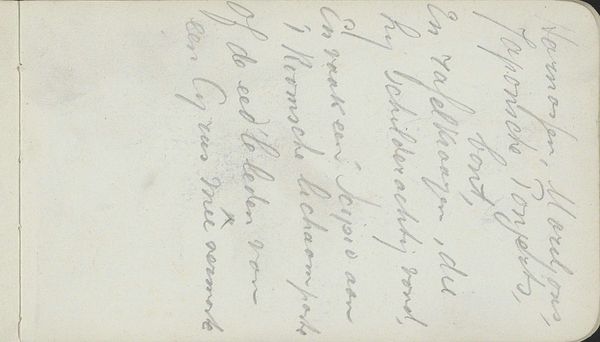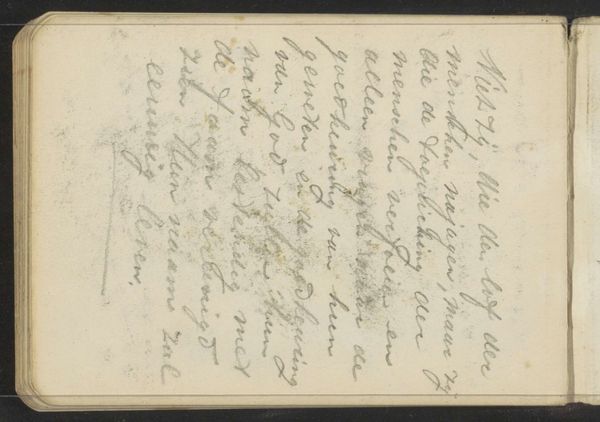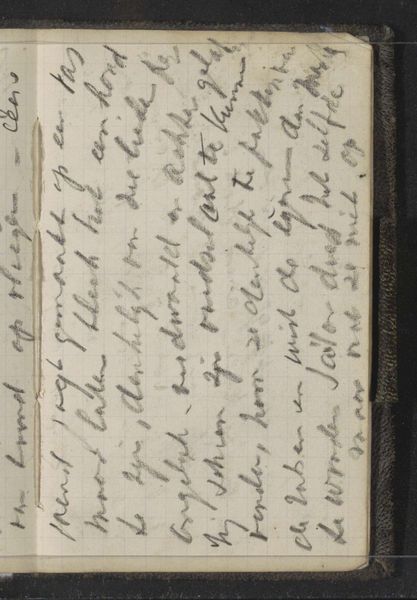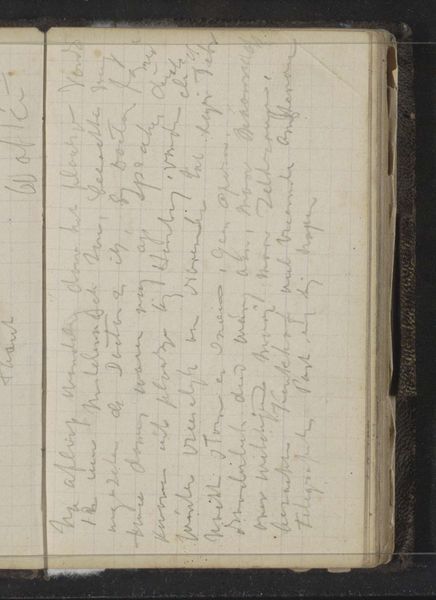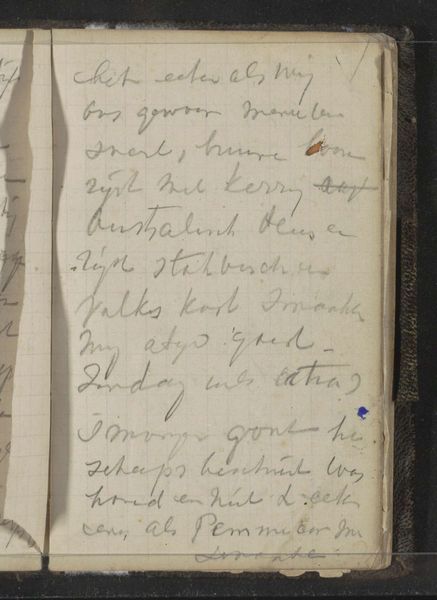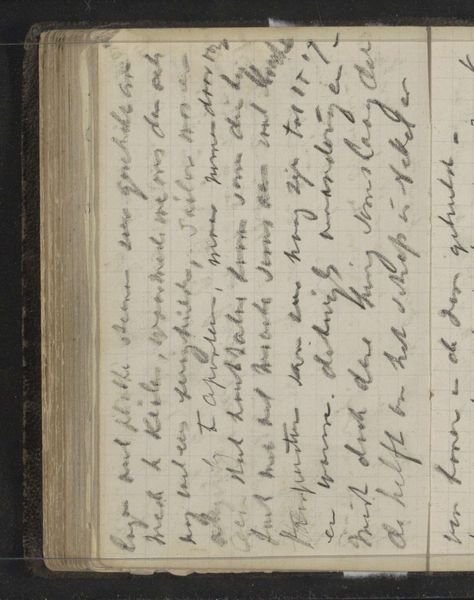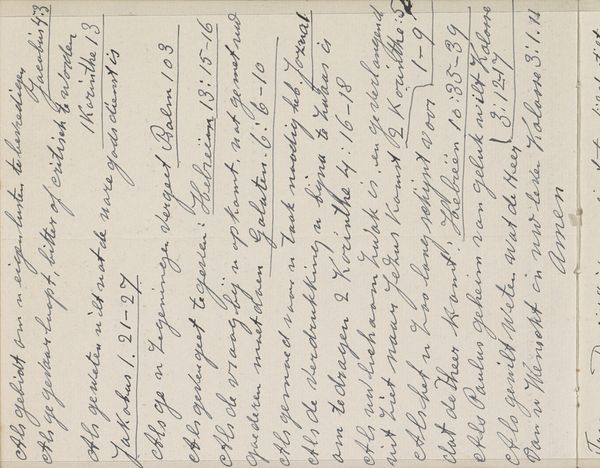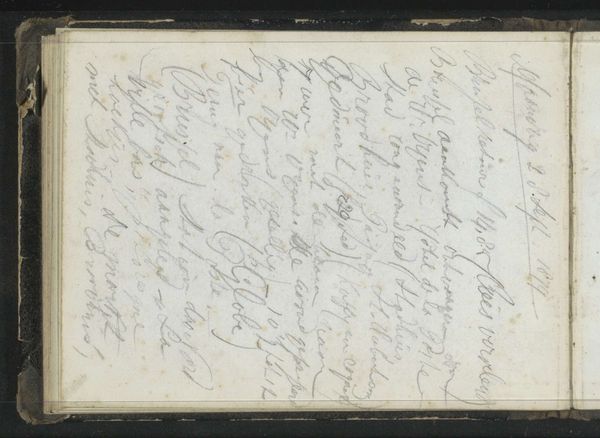
drawing, paper, watercolor, ink
#
drawing
#
landscape
#
paper
#
watercolor
#
ink
#
watercolor
Copyright: Rijks Museum: Open Domain
Editor: Here we have Johannes Tavenraat's "Kleurnotities," or "Color Notes," made around 1862 to 1864. It's an intriguing work, ink and watercolor on paper, a sort of personal notebook page displayed in the Rijksmuseum. The flowing script gives it an almost ephemeral quality. What do you see in this piece, Professor? Curator: What strikes me immediately is the interplay between representation and pure abstraction. Though ostensibly "notes," the careful arrangement of the text possesses an inherent visual rhythm. Observe the careful differentiation of strokes and the deployment of color to structure the page, to emphasize certain phrases. Editor: So, it's not just about what the words say, but how they look? Curator: Precisely. Semiotically, we could analyze this as a self-referential artwork. The subject *is* color, and the medium embodies it, too. The materiality of the paper, the specific viscosity of the ink and watercolor--these elements directly convey Tavenraat’s observations. Notice also how Tavenraat creates separate lists; how does the clustering create new associations? Editor: The placement does feel very deliberate. I initially thought it was simply writing, but seeing the groupings differently creates another dimension, something like concrete poetry but with color instead. Curator: Indeed. The composition allows us to access his specific sensibility. We get a glimpse into the way he organizes his perceptions through this visual mapping of language. We perceive his process in action. Editor: It's amazing how a simple notebook can be such a revealing work. I see it differently now. Curator: Precisely, analyzing the structure gives us tools with which to see new works and ideas.
Comments
No comments
Be the first to comment and join the conversation on the ultimate creative platform.
